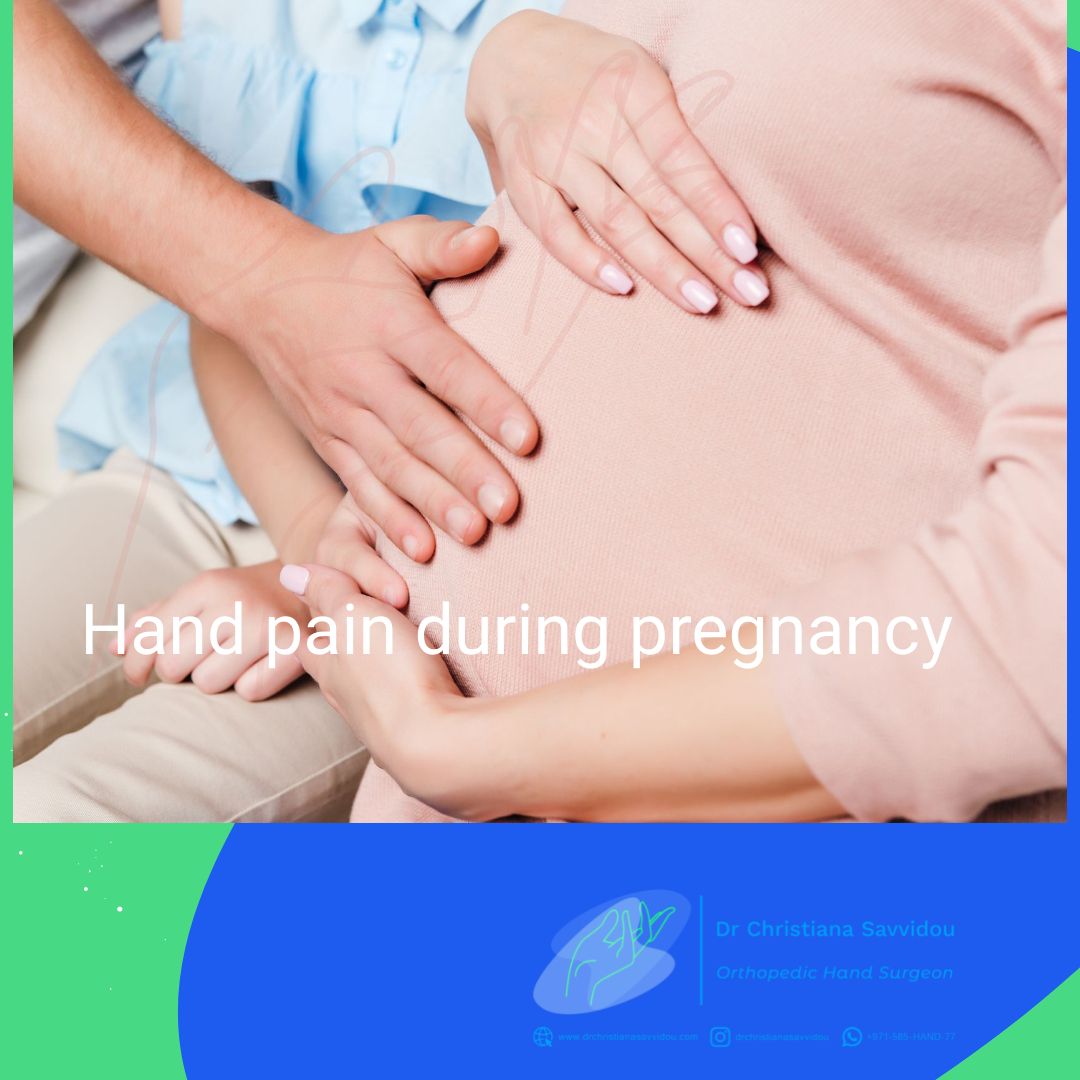Hand pain during pregnancy and in new mothers
De Quervain’s tendonitis is a common inflammation of the tendons around the thumb and the wrist.
Most people with de Quervain’s will have pain at the wrist below the thumb, that will worsen with movement.
It is most often seen in women, at the end of pregnancy or in new mothers, due to repetitive movement and an increase in swelling during pregnancy.
The tendons of the wrist and the thumb, run through isolated compartments at the level of the wrist. They pass through tunnels and in normal circumstances glide easily and smoothly when the thumb moves.
If swelling and inflammation are present, pain and tenderness will develop. Usually, this condition presents while performing tight gripping or twisting of the wrist.
Main signs and symptoms:
- Pain is the main symptom of De Quervain’s tendonitis with specific movements or actions performed. Activities that require pinch and tight gripping, opening a door, opening a jar, could produce pain. In some cases when the inflammation is severe, pain occurs even with slight movements.
- Swelling on the thumb or the wrist can be seen. Sometimes cysts could be noticed as well.
- A snapping or clicking sensation can occur due to the inflammation and swelling around the tendons.
- Superficial nerves, which provide sensation to the thumb skin, can also be irritated and cause numbness.
How is it diagnosed?
The diagnosis of DeQuervain’s tendonitis is mainly clinical. Tenderness, pain, and swelling at the thumb and the wrist are present. Your hand doctor may perform a stress test by stretching the tendons that run to the thumb producing pain. X-rays may also be needed to rule out other conditions such as arthritis or fractures.
What can I do to prevent de Quervain's?
Although difficult the best way to prevent tendinitis is to avoid overuse and repetitive motions of your wrist and thumb.
Changing the way we do things to rely on stronger muscles to do a certain activity is helpful.
Specifically for new parents, some tips include:
- When lifting your baby, use both arms instead of lifting with your wrists.
- Take advantage of tummy time to interact with baby, it helps bonding without actually holding your baby in your arms.
- When feeding or carrying your baby, avoid holding the same position for a long time.
- Consider the use of a bath sling to support your baby during bath time to take pressure off your hands.
- When dressing try to use simple outfits to eliminate force over hands.
- Use electric jar openers to open baby food jars.
- WUse strollers whenever possible instead of carrying the baby in your arms.
- Ask for help and share your dishwashing, vacuuming, and laundry tasks when help is offered.
What can I do if I have de Quervain's?
Eliminating or avoiding painful movements is key for pain relief. The goal of treatment is to decrease inflammation and relieve pain. Your hand doctor may recommend limiting thumb movement with a splint and anti-inflammatory medication. Physiotherapy along with massage, stretching, and strengthening may be advised as well.
Other treatment options include an injection at the site of the tendon and rigid immobilization.
When conservative options do not improve the condition, your hand doctor may discuss surgical options.


